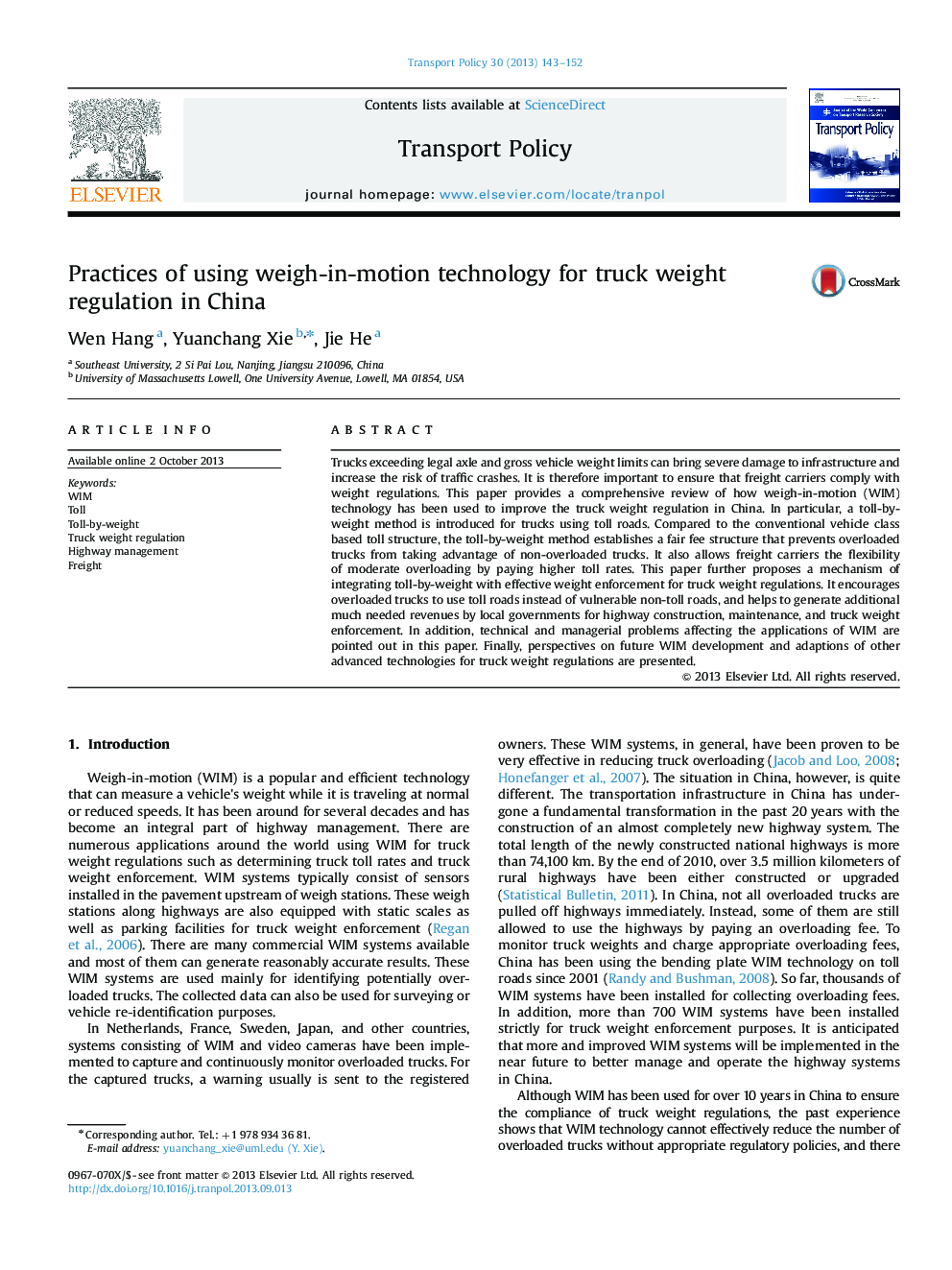| Article ID | Journal | Published Year | Pages | File Type |
|---|---|---|---|---|
| 7498119 | Transport Policy | 2013 | 10 Pages |
Abstract
Trucks exceeding legal axle and gross vehicle weight limits can bring severe damage to infrastructure and increase the risk of traffic crashes. It is therefore important to ensure that freight carriers comply with weight regulations. This paper provides a comprehensive review of how weigh-in-motion (WIM) technology has been used to improve the truck weight regulation in China. In particular, a toll-by-weight method is introduced for trucks using toll roads. Compared to the conventional vehicle class based toll structure, the toll-by-weight method establishes a fair fee structure that prevents overloaded trucks from taking advantage of non-overloaded trucks. It also allows freight carriers the flexibility of moderate overloading by paying higher toll rates. This paper further proposes a mechanism of integrating toll-by-weight with effective weight enforcement for truck weight regulations. It encourages overloaded trucks to use toll roads instead of vulnerable non-toll roads, and helps to generate additional much needed revenues by local governments for highway construction, maintenance, and truck weight enforcement. In addition, technical and managerial problems affecting the applications of WIM are pointed out in this paper. Finally, perspectives on future WIM development and adaptions of other advanced technologies for truck weight regulations are presented.
Related Topics
Social Sciences and Humanities
Social Sciences
Geography, Planning and Development
Authors
Wen Hang, Yuanchang Xie, Jie He,
